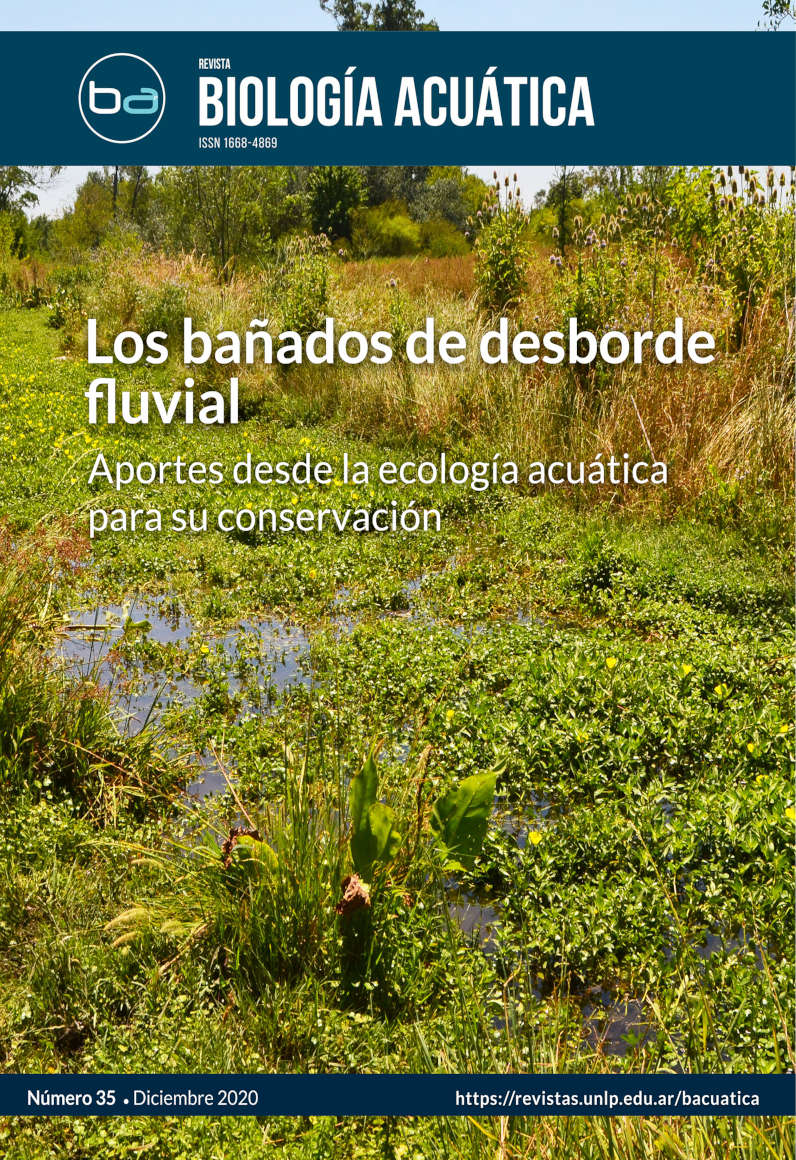Observations on some ecological characteristics of the plants that inhabit the riverine wetlands affected by urbanization and agricultural practices
DOI:
https://doi.org/10.24215/16684869e012Keywords:
Conservation, land uses, vascular plants, wetlandsAbstract
The aim of this work was to expose, from four case studies of riverine wetland located in the Pampas floodplain (NE of the Province of Buenos Aires), the composition and relative coverage of the vegetation assemblies associated with these wetlands. Also, the characteristics linked to the plants tolerance with the presence of water are explored, as indicators of hydrological variability, which define these environments subject to different land uses. Floristic inventories were carried out by transversal transects across to the watercourse, establishing in each one, nine sampling units of 1 m2, in the riverine wetland located in the streams Chubichaminí, Cajaravillas, Del Gato and Carnaval, during March 2020. The analysis of the inventories of the four wetlands allowed us to identified 44 taxa. The relative coverage of the species, classified according to the tolerance of the plants to the permanence of the water in the riverine wetland, made possible to recognize how the uses of the land influence in the characteristics. Those found in rural areas, better preserved and that maintain the connectivity with groundwater, it was observed that the relative coverage of obligatory hydrophyte plus facultative species was higher than 85%, than those observed in peri-urban areas with agricultural activity. In the latter, the highest coverage of terrestrial species was observed (18-30%). Recognizing the characteristics of the vegetation that inhabits these wetlands will contribute to establishing management strategies for conservation and rehabilitation as well as delimiting these wetlands.





















